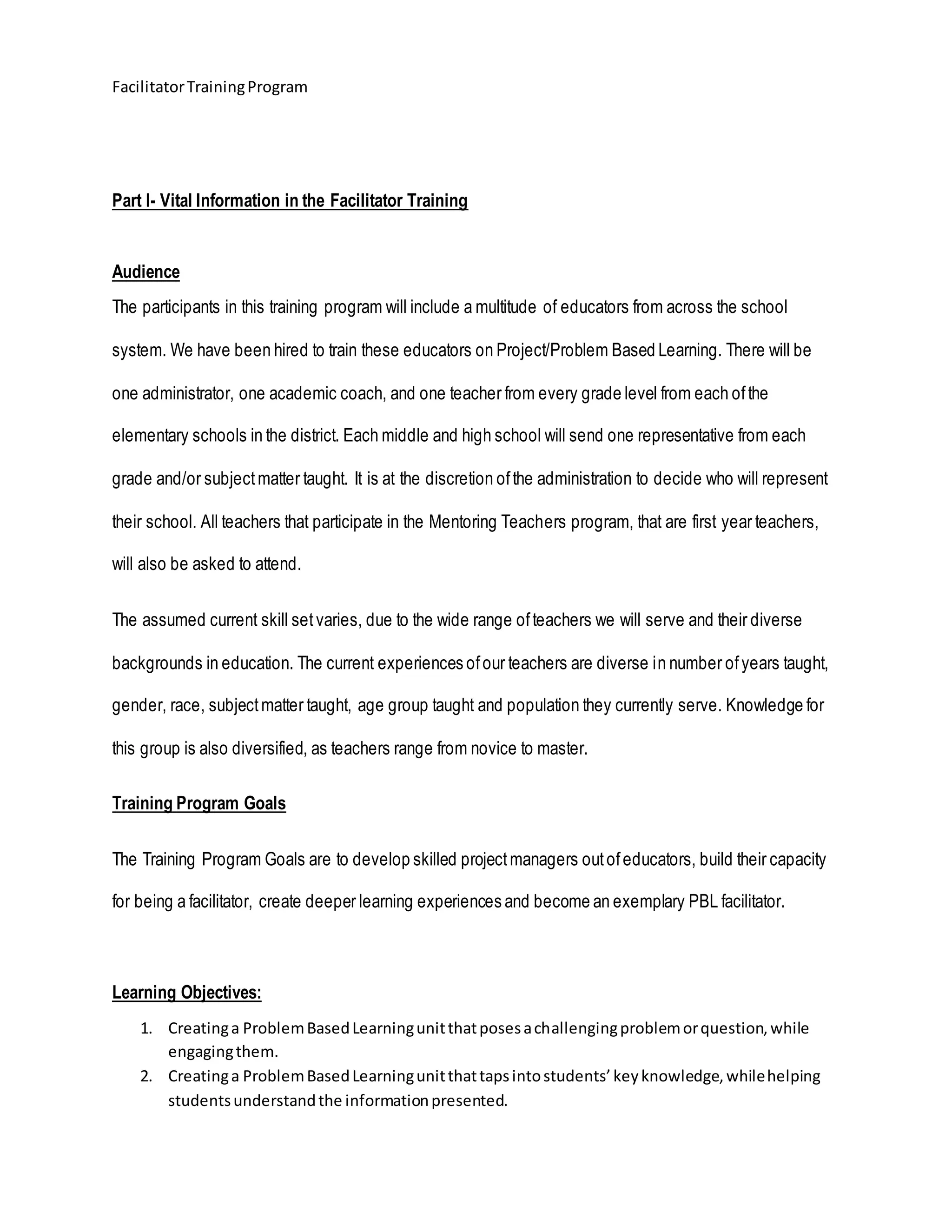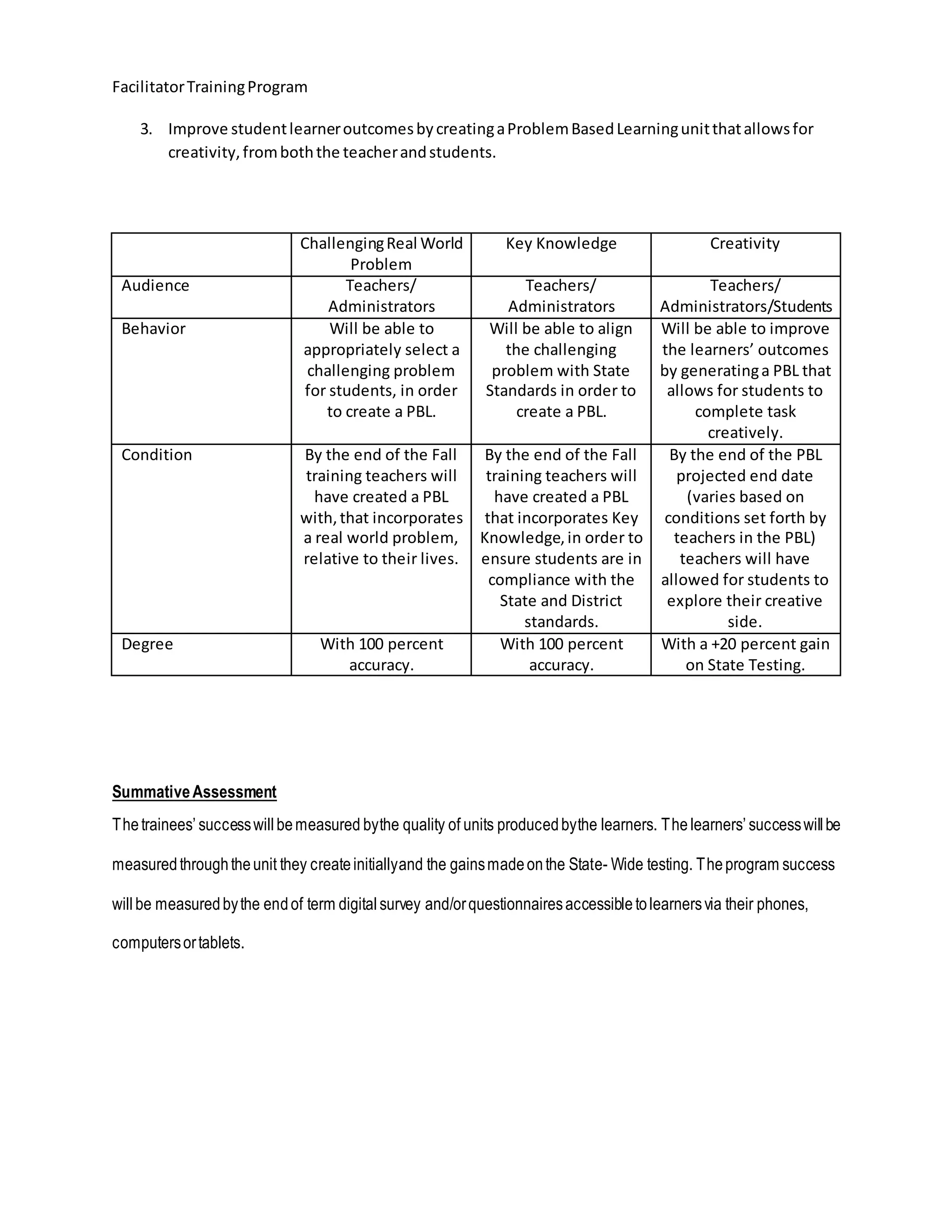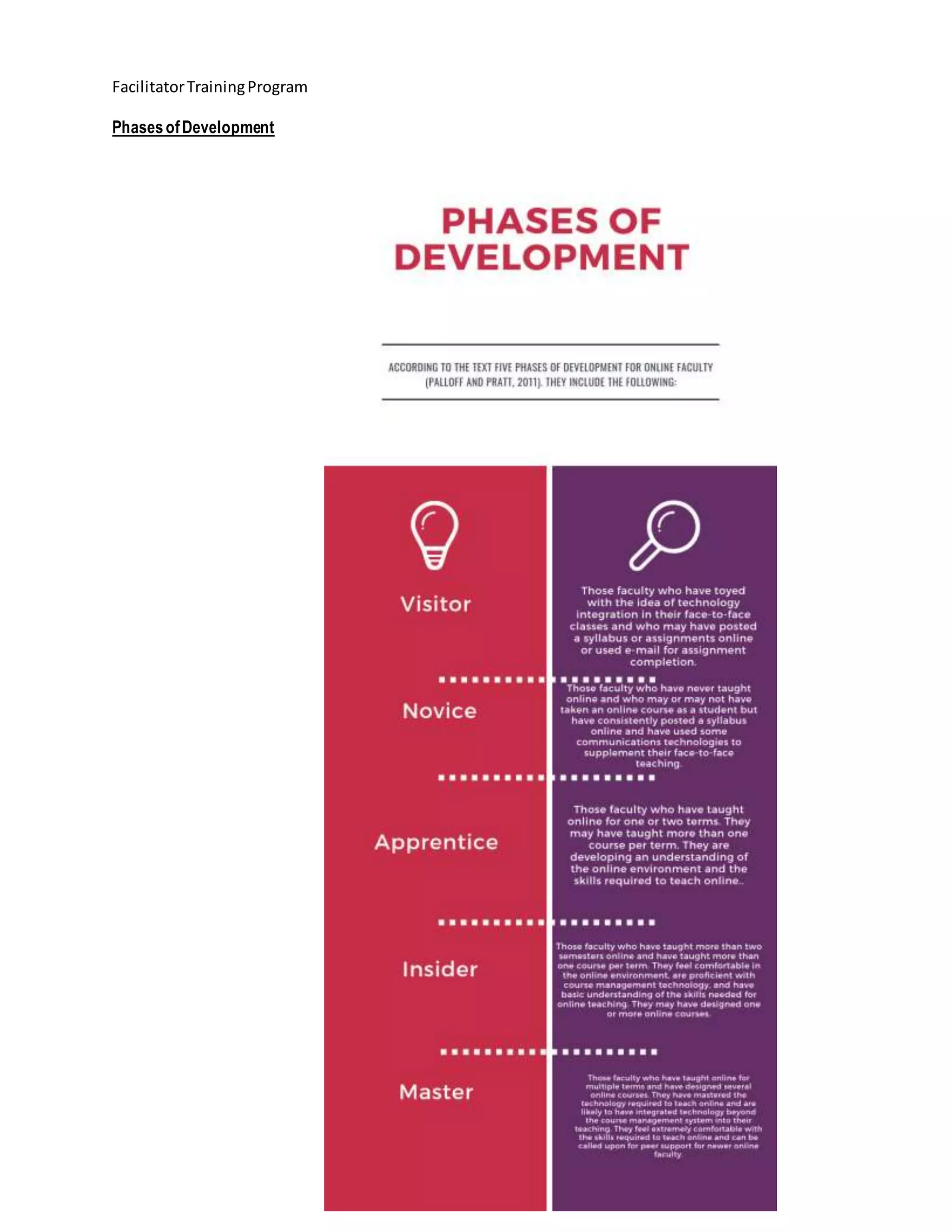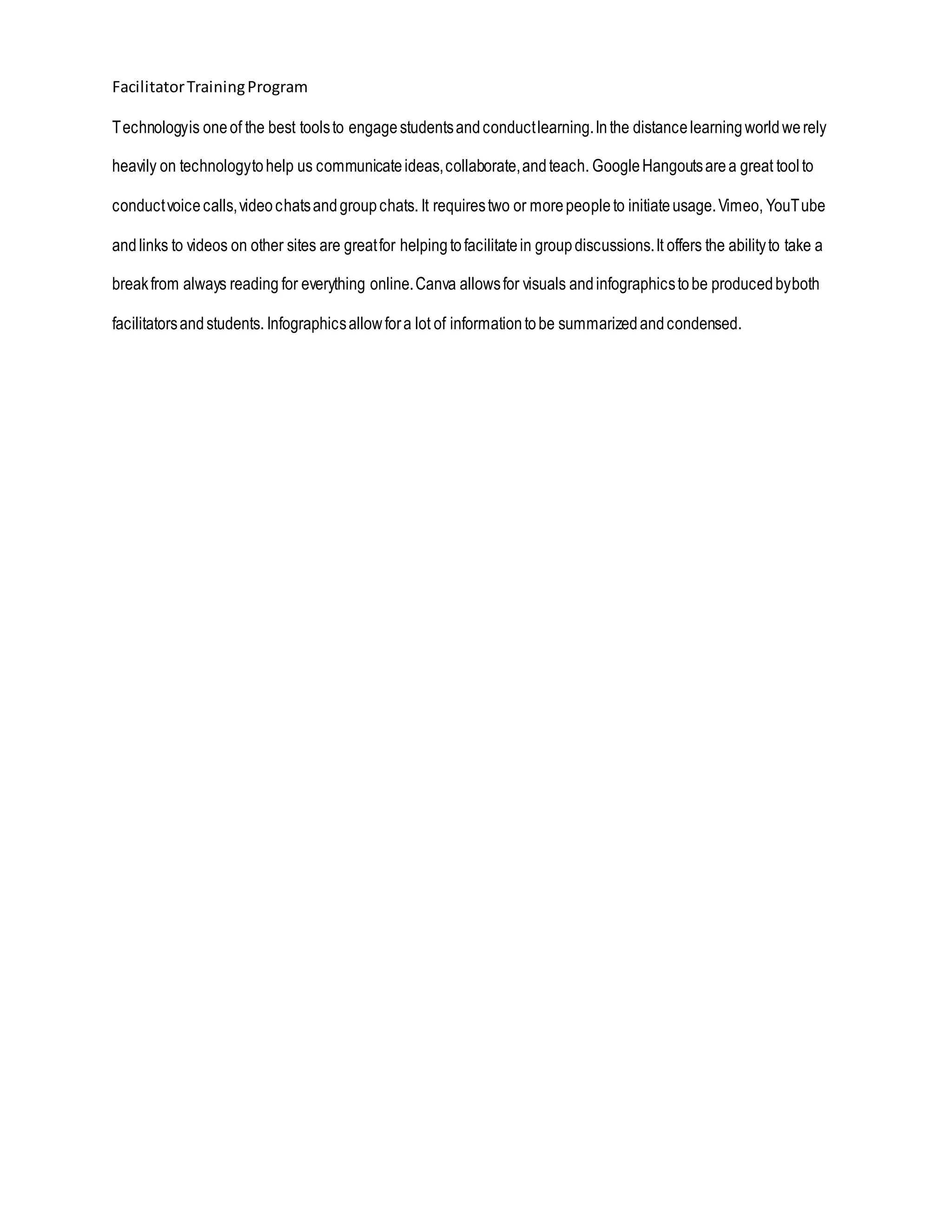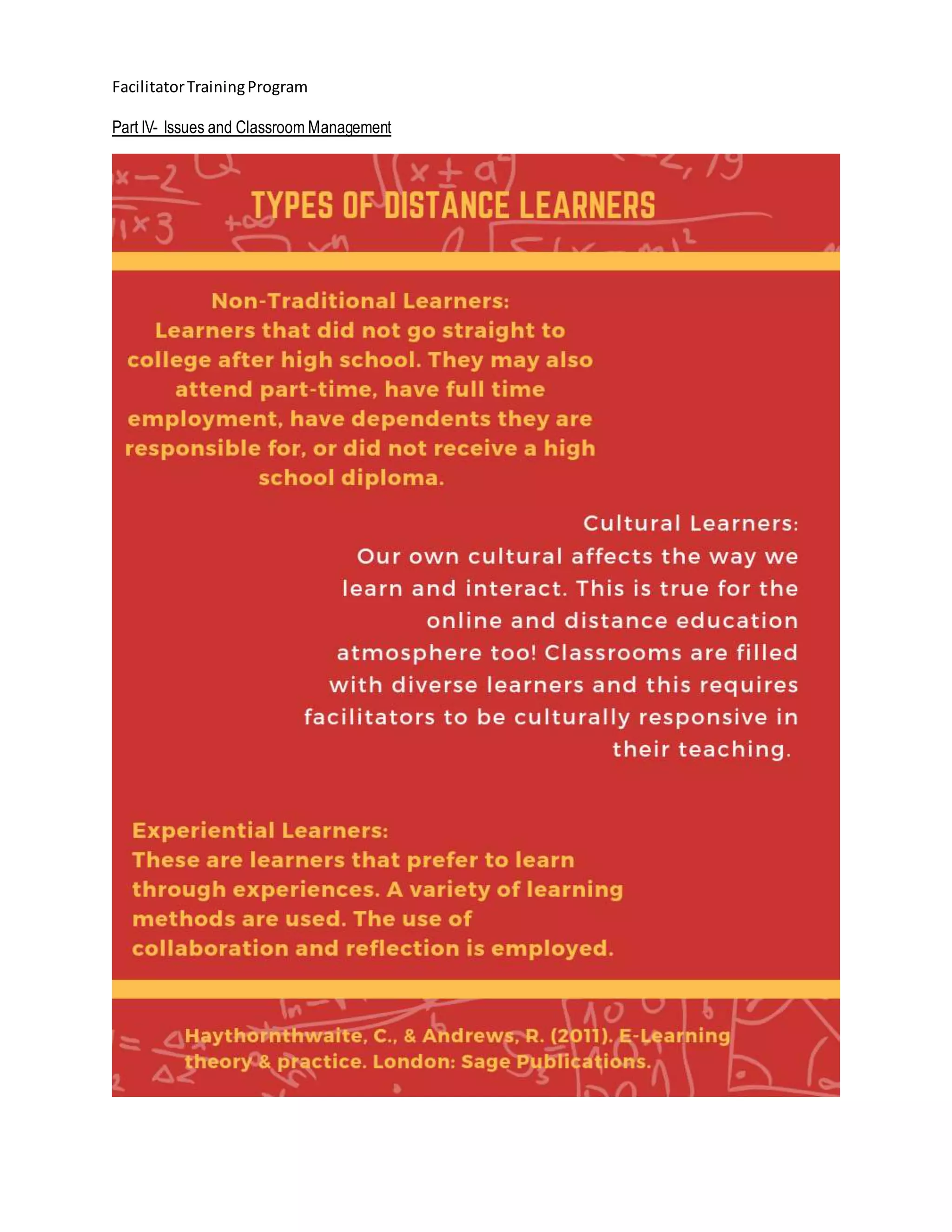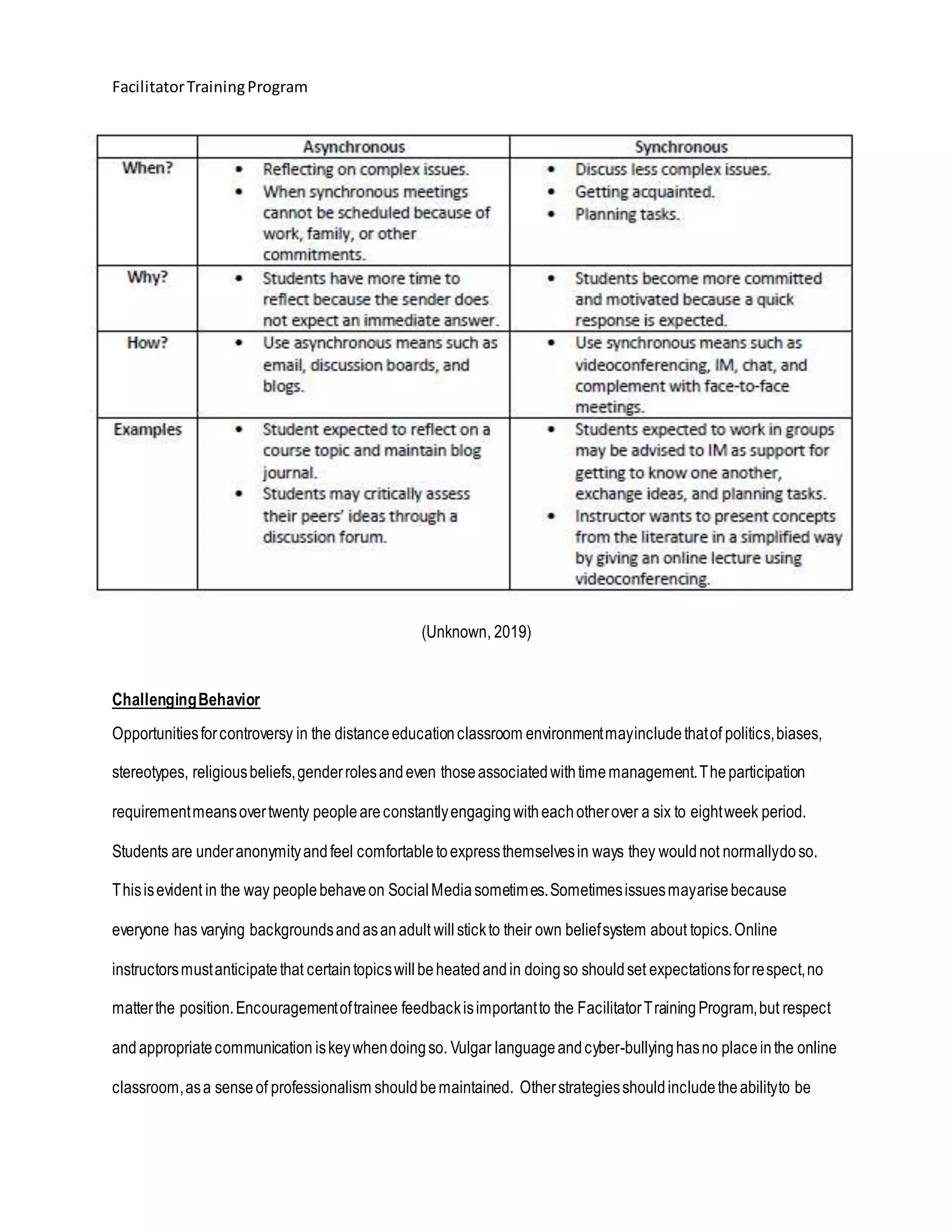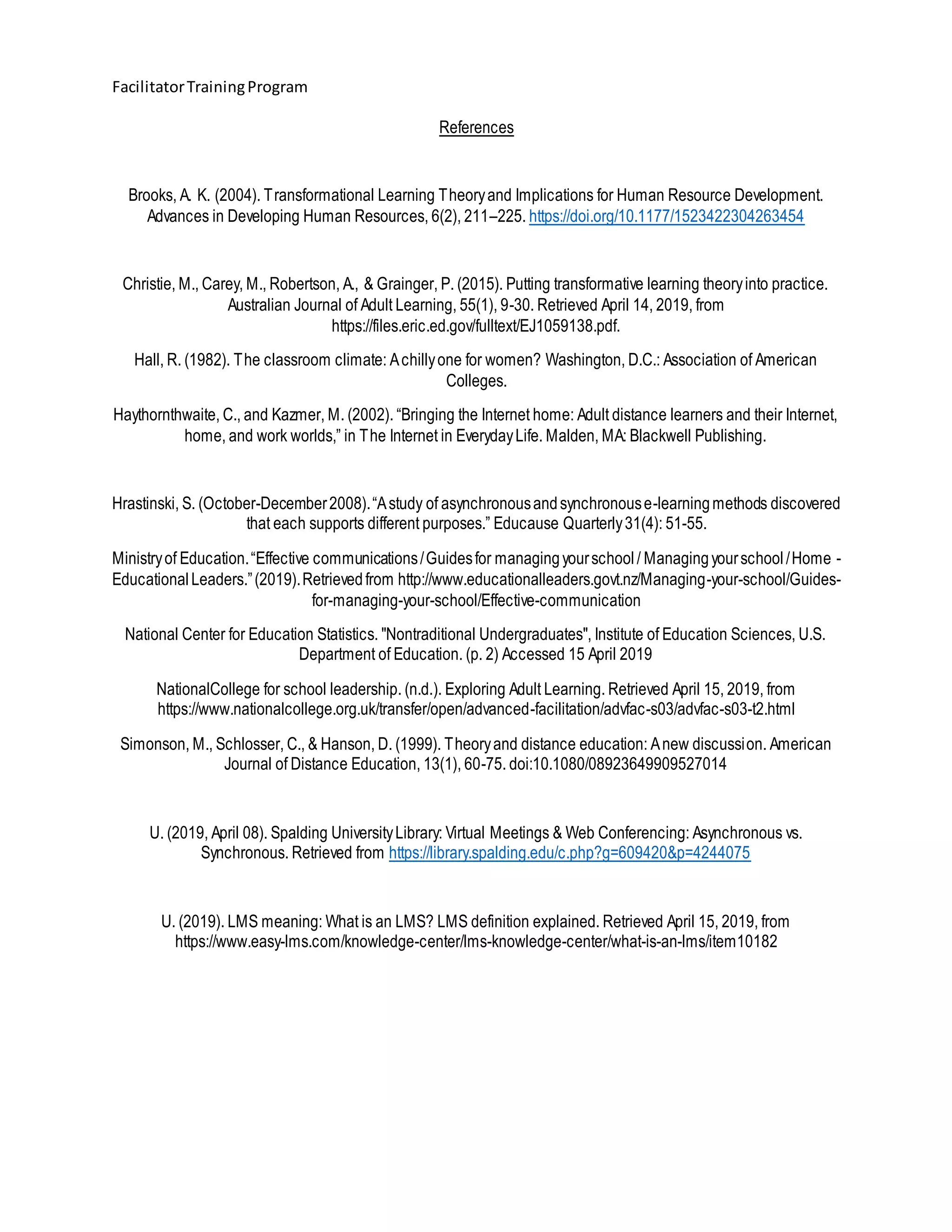The document outlines a facilitator training program for educators to learn about project/problem-based learning. It will train administrators, teachers, and academic coaches from elementary, middle, and high schools. The training program goals are to develop skilled project managers, build facilitation capacity, create deeper learning experiences, and become exemplary PBL facilitators. Trainees will create a PBL unit and their success will be measured by the quality of the units produced and student learning gains on state tests. The training will focus on developing key facilitator skills like communication, time management, feedback, and assessment to support distance learning. Learning theories around industrialization of teaching, interaction/communication, and engagement will guide the training design.

